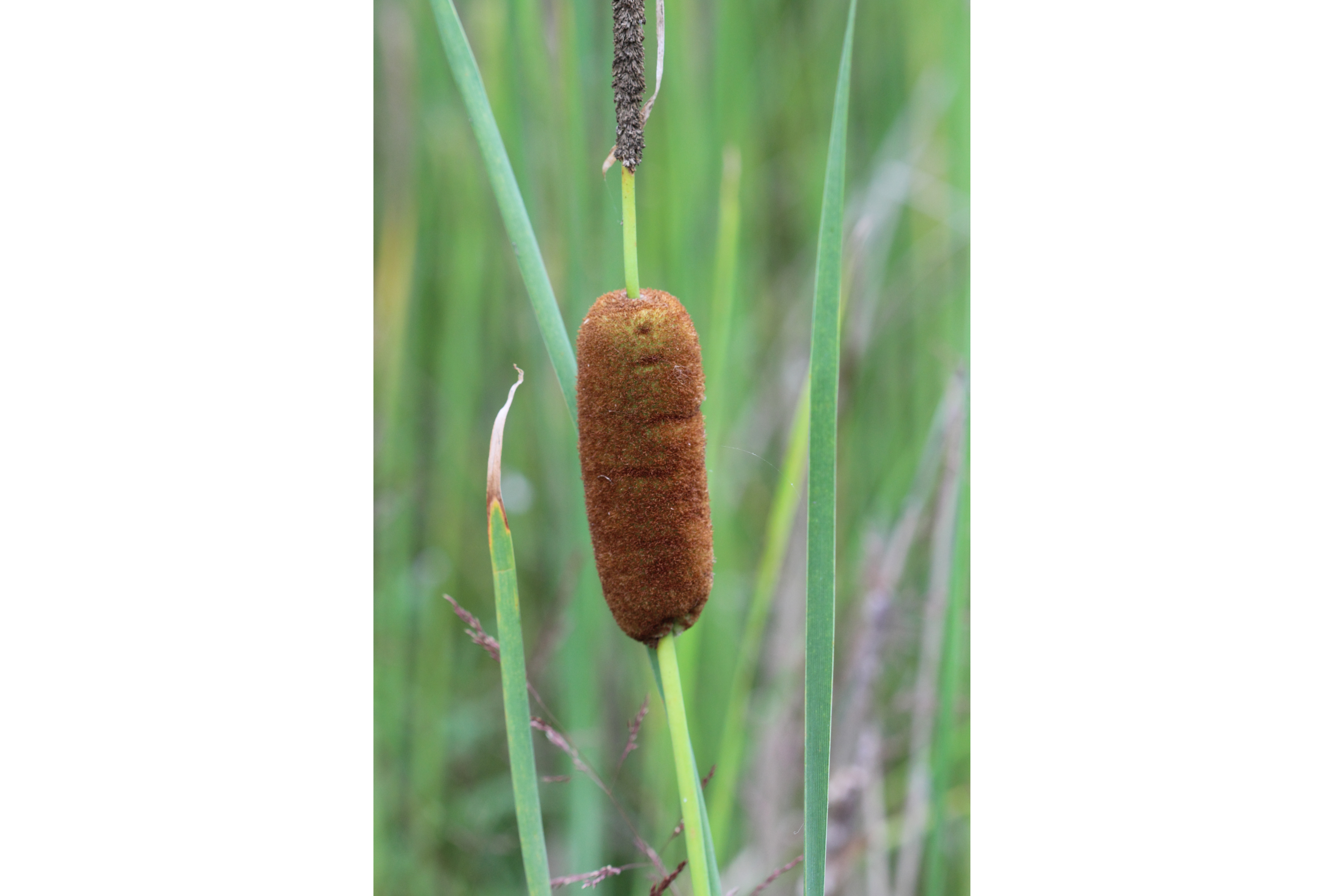"Graceful cattail "
(Typha laxmannii)

Description
Typha laxmannii, common name graceful cattail, is a wetland plant species widespread across Europe and Asia. Typha laxmannii is not as tall as many of the other species in the genus, rarely more than 130 cm high. A noticeable space separates the staminate (male) flowers from the pistillate (female) ones. Typha is a genus of about 30 species of monocotyledonous flowering plants in the family Typhaceae. These plants have a variety of common names, in British English as bulrush or reedmace, in American English as reed, cattail, or punks, in Australia as cumbungi or bulrush, in Canada as bulrush or cattail, and in New Zealand as raupo. Other taxa of plants may be known as bulrush, including some sedges in Scirpus and related genera. The genus is largely distributed in the Northern Hemisphere, where it is found in a variety of wetland habitats. The rhizomes are edible. Evidence of preserved starch grains on grinding stones suggests they were already eaten in Europe 30,000 years ago. Typha are aquatic or semi-aquatic, rhizomatous, herbaceous perennial plants. The leaves are glabrous (hairless), linear, alternate and mostly basal on a simple, jointless stem that bears the flowering spikes. The plants are monoecious, with unisexual flowers that develop in dense racemes. The numerous male flowers form a narrow spike at the top of the vertical stem. Each male (staminate) flower is reduced to a pair of stamens and hairs, and withers once the pollen is shed. Large numbers of tiny female flowers form a dense, sausage-shaped spike on the stem below the male spike. In larger species this can be up to 30 centimetres (12 in) long and 1 to 4 centimetres (0.4 to 2 in) thick. The seeds are minute, 0.2 millimetres (0.008 in) long, and attached to fine hairs. When ripe, the heads disintegrate into a cottony fluff from which the seeds disperse by wind. Typha are often among the first wetland plants to colonize areas of newly exposed wet mud, with their abundant wind-dispersed seeds. Buried seeds can survive in the soil for long periods of time. They germinate best with sunlight and fluctuating temperatures, which is typical of many wetland plants that regenerate on mud flats. The plants also spread by rhizomes, forming large, interconnected stands.
Taxonomic tree:







